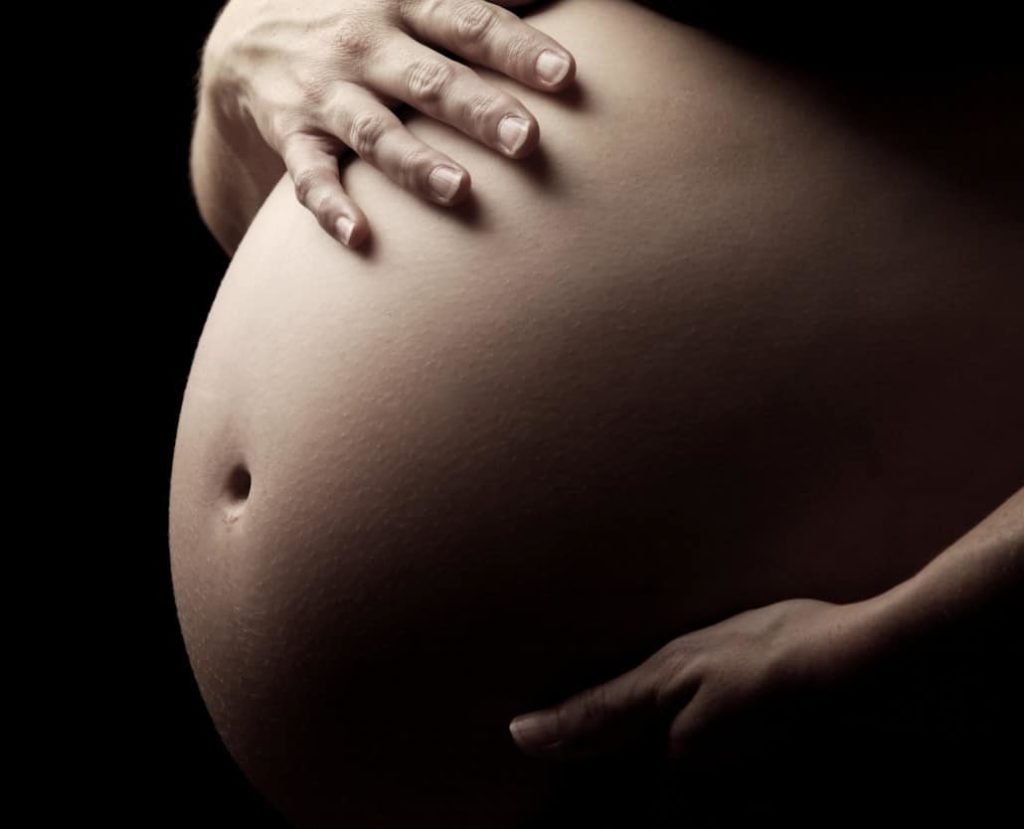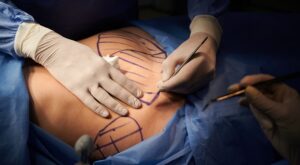During pregnancy, the hormone changes that women undergo are designed to prepare for the expansion of certain parts of the body – mainly the hips, abdomen and breasts.
This results in the loosening or softening of skin, muscles, ligaments and certain joints, preparing the woman for the pregnancy and subsequent childbirth.
In the next series of blogs, I will address many of the issues that women wish to explore related to body changes and pregnancy. I will focus particularly on the breasts and abdomen, as these are the two most common areas that women tend to feel unhappy about and come to discuss with me following pregnancy.
In this, the first article in the Cosmetic Surgery & Pregnancy Series I will focus on cosmetic breast surgery and pregnancy. The next will be about the changes to your abdomen, and finally an article about general body changes during pregnancy and some non-cosmetic procedures that can often help.
Breast Augmentation (Implants) and Pregnancy
There are a number of aspects regarding breast augmentation and pregnancy that women often ask me about – mainly the ideal timeframe between the surgery and pregnancy and vice versa, as well as what can be done to repair sagging breasts after having children.
My advice is always the same: it’s important to have all the information that will allow you to make a decision about what is best for you. During a breast augmentation consultation meeting I usually discuss all the changes that occur during pregnancy and give you my opinion about what I think is best for you depending on when or if you have had or intend to have children. Once you are educated with all the necessary information I will ask you to think about what’s best for your situation, and if you still want to go ahead I’m happy to book an operation.
Need to Know: Changes to the Breast During Pregnancy & Breastfeeding
The non-pregnant breast consists mainly of fat with a much lesser breast gland component. This is regardless of whether your breasts are small, average or large. With the hormonal changes during pregnancy, the breast gland component dramatically expands (in preparation for lactation) at the expense of the breast fat. So by the end of pregnancy the breasts are usually very enlarged, heavy and often painful.
After delivery and once breast feeding has ceased, the hormonal profile returns to your pre-pregnancy state. This results in the breast gland once again reducing in size. Unfortunately, however, the breast fat does not return to its previous state. Coupled with this, the breast skin has expanded to accommodate the enlarged breasts during pregnancy, and now that the gland has reduced in size and the breast has lost some fat volume, the breasts tend to droop.
Should I have a breast augmentation even if I plan on having children soon?
These changes to your breasts do become worse and more pronounced the longer you breast feed for and the more children you have. Therefore, it is important to be aware that if you do have a breast augmentation prior to falling pregnant, you will still likely experience similar problems with drooping after the breast gland has expanded, stretched the skin and then contracted.
This is unfortunate, especially if you have just gone through the expense and risk of a breast augmentation. Ideally, in my opinion, the timeframe between your augmentation and pregnancy should be around 2 or more years.
I have just had a baby, when can I have a breast augmentation?
The next issue is the timeframe between delivering your baby and having an augmentation. Ideally, you need to wait until your baby is 6 months old. This is the time it takes for the increased blood supply that occurs to prepare for lactation to reduce to the pre-pregnancy state. A breast augmentation performed too early increases your risk of bleeding and, on rare occasions, may result in milk leakage out of the surgery wound.
Will I be able to breastfeed if I have a breast augmentation?
A breast augmentation does not in itself result in a woman not being able to breastfeed. Research shows that about 50% of women who have had a breast lift or reduction are unable to breastfeed. This may be because these procedures involve cutting into the breast gland structures. However, what many people don’t take into account is that there are a significant number of women who are naturally unable to breastfeed. If a woman hasn’t had a child before having a breast augmentation, then it is unknown whether she had the ability to breastfeed to begin with.
The bottom line is, if you have a breast augmentation before having your first child, only time will tell if you will be able to successfully breastfeed or not.
Breast Lift (Mastopexy) and/or Augmentation After Pregnancy
The changes to the breasts during pregnancy (discussed above) almost always result in the breasts losing volume and becoming ‘droopy’, so a common question from women who have already had a number of children is what can be done to return the appearance of their breasts.
The most popular option is a breast lift – either with or without an accompanying augmentation (implants). The choice between a lift with or without implants will depend on the result you want. A simple breast lift (simple mastopexy) will rearrange the breast gland structure – moving it higher up the chest – and reduce the excess skin on the breast. This results in small but shapely and perky breasts. If a fuller look is desired, a breast lift can be performed with implants simultaneously.
Unfortunately, this operation does not always result in a long-term solution. Breast droop is a natural phenomenon with time/age/gravity. It is not preventable. Some women are fortunate in that the breasts’ supporting structures and ligaments delay droop while with other less fortunate women, droop occurs early and easily. This applies to both the natural state of the breasts as well as after a lift. It is estimated that droop after a lift procedure can occur as early as 3 years after the surgery (with the lesser “donut” lift) or 5 to 7 years after the “classic” breast lift.
Breast Reduction (Reduction Mammoplasty) after Pregnancy
A breast reduction is a much more durable operation than a breast lift, often lasting in excess of 10 years before droop sets in again. Depending on the desired results, a breast reduction can involve the removal of minimal breast gland tissue or a large amount of breast tissue, as well as a removal of excess skin.
It is actually also possible to perform a breast reduction with implants simultaneously – the implants here of course are more for shape than size. Ultimately, a breast reduction may be considered as the “perfect lift”.
The incision and scarring pattern with a this procedure (breast reduction with implants) is the same as that involved in a breast lift or a breast reduction. It is known as a “lollipop” scar – with an incision made around the areolar (pigmented) skin and down the front of the breast into the crease under the breast.
To further discuss your options feel free to get in touch with us or book a consultation with Dr. Goldman.






